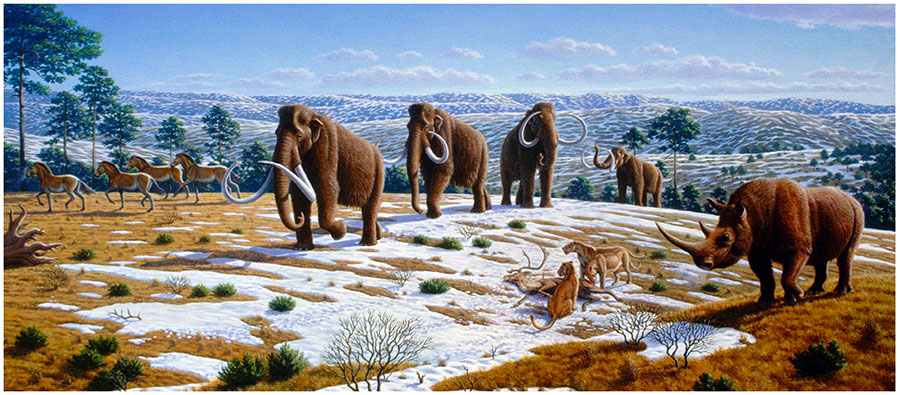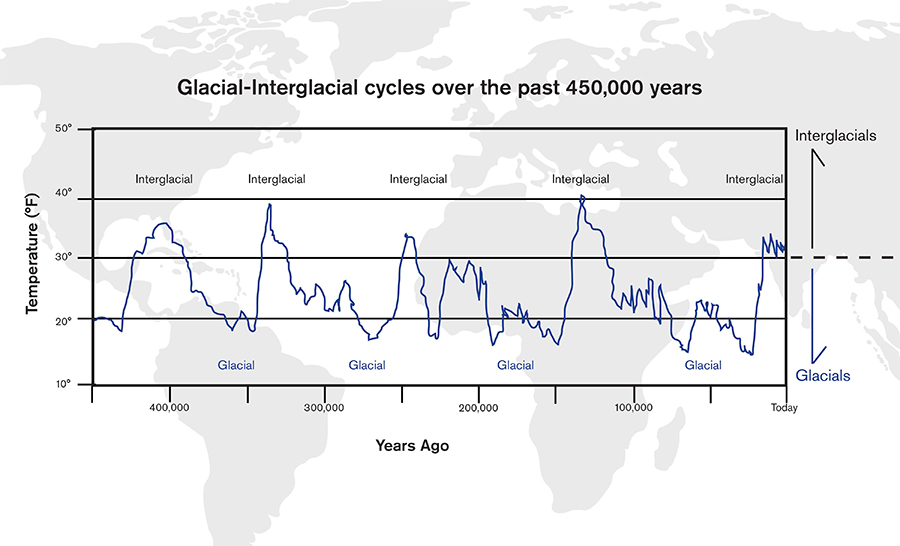- There is broad public and scientific interest in the question of whether human evolution and adaptability was affected by climate change
- A great period of climate change is also a period of significant changes in stone tool technology
- Later as global climate showed signs of drying, we see greater human migration
Highlights
Understanding the relationship between Earth history and human evolution is an enduring challenge of broad scientific and public interest. Scientists studying the effects of ancient climate change on human evolution have had to depend on local, but incomplete, terrestrial records and analysis of deep ocean cores collected a considerable distance from where major hominin fossils—the ancient remains of human ancestors—have actually been found. Research by the Hominin Sites and Paleolakes Drilling Project will help scientists better understand the dynamics that link climatic and evolutionary histories.
Increased environmental variability, combined with the intense period of drying, overlap with a major turnover in large-bodied, specialized grazing mammals becoming locally extinct and replaced by related, but smaller-bodied animals. Though these large-bodied animals may have adapted to a generally drier climate, they may not have been equipped to adapt to the rapid variability from wet to dry conditions.

Abrupt cooling of the Earth during the Younger Dryas, 12,800 to 11,600 years ago.
Image credit https://www.worldhistory.org/image/6115/woolly-mammoths/. Original image by Mauricio Antón.
Glacial/Interglacial periods of change
The period of greatest climate variability, between wet and dry conditions, took place between about 650,000 to 350,000 years. This correlates with significant changes in stone tools technologies, from the large rock hand axes of the Acheulean industry to the smaller, prepared-core and points stone tools of the Middle Stone Age, developed by 320,000 years ago. The later records also shows evidence of pigment use and sourcing raw materials for stone tools from a greater distance.

Glacial-interglacial periods over the last 450,000 years.
Recreated from https://geology.utah.gov/map-pub/survey-notes/glad-you-asked/ice-ages-what-are-they-and-what-causes-them/
One of the questions in connecting paleoclimate with transitions in human evolution is whether the changes were driven by increasing aridity or increased climatic variability.
When Middle Stone Age tools emerged between 350,000 and 50,000 years, symbolic cultures developed, Homo sapiens appeared, and human fossils from Asia indicate that the earliest modern humans dispersed from Africa between 120,000 and 50,000 years ago. Other climate records indicate that these drier climates, punctuated by wet episodes, may have supported a greener Sahara, opening the possibility of migration across northern routes.
Against this backdrop of a generally drier climate, our early human ancestors were adapting to a variable climate, changing plants and animals in the environment, and creating an ever-sophisticated stone tool technology. Though this research does not emphatically prove that these forced adaptations spurred on the evolution of our species, it does provide more evidence of the environment that our uniquely adaptive ancestors were managing to survive and thrive in.
Written by Chris Campisano